The Blue Book 2024 is presented to us by Nathalie Verdeille, chief artistic director of Tiffany & Co. The Tiffany Céleste assortment
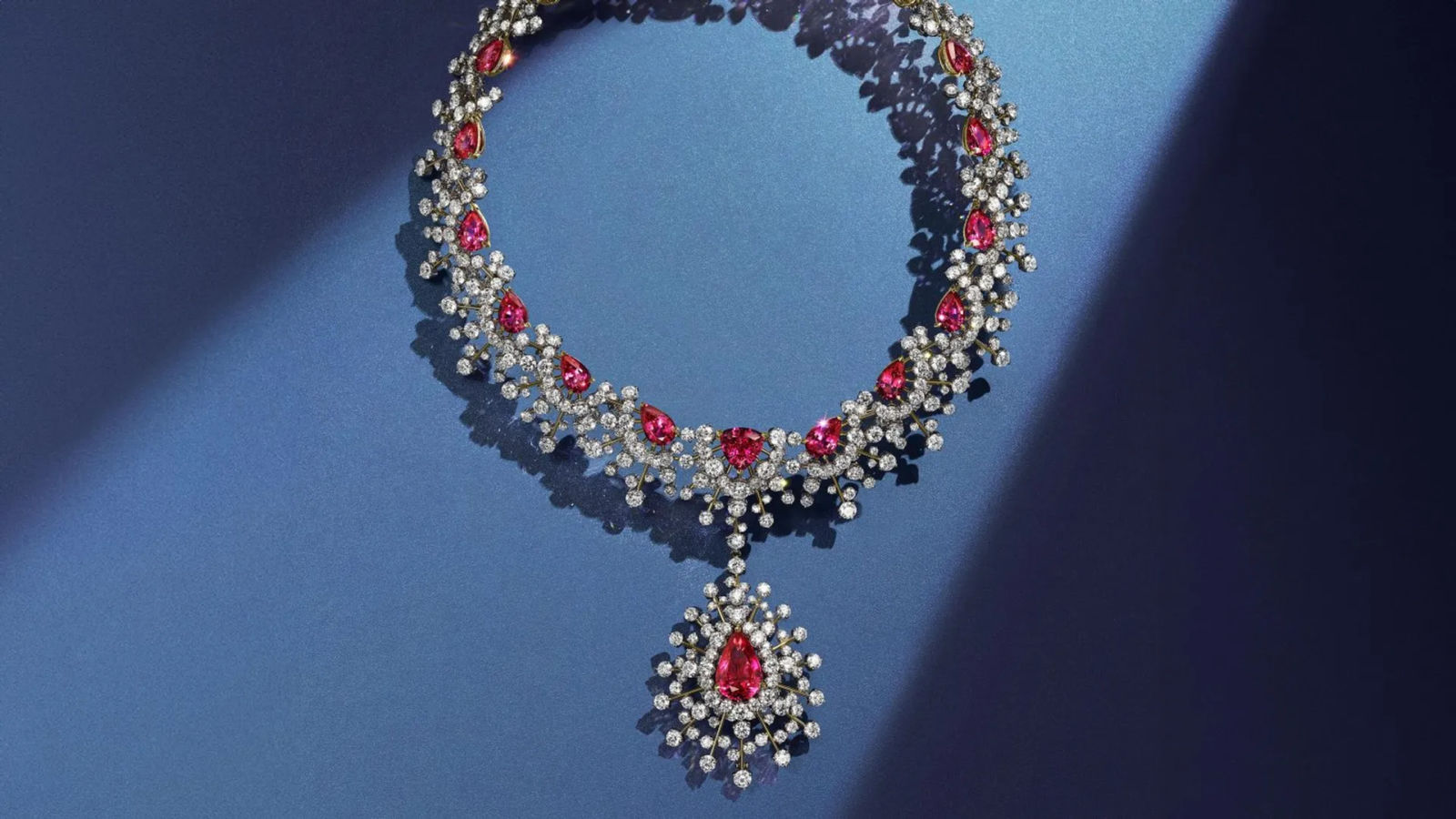

The chief artistic director of Tiffany & Co., Nathalie Verdeille, discusses how her second high jewellery collection for the brand was inspired by famed Tiffany designer Jean Schlumberger in an interview with Prestige Singapore in Hong Kong.
In its recent high jewellery collections, Tiffany & Co has been going to the extremes: last year, the New York house took fans on a deep dive into the oceans with its marine-inspired Blue Book 2023: Out of the Blue collection. This year, Tiffany looks up to the heavens with its latest, and largest to date, high jewellery collection, Blue Book 2024: Tiffany Céleste. Featuring 157 stunning pieces, Tiffany Céleste takes its cues from the cosmos and constellations.

What both collections do have in common, aside from stunning artistry and equally stunning gemstones, is that they were inspired by the creations and sketches of renowned Tiffany designer Jean Schlumberger. Working with Tiffany from the 1950s to the ‘70s, Schlumberger was the brand’s first named designer and remains one of its most well-known. In Hong Kong in June for the summer presentation of Tiffany Céleste, Prestige Singapore was given a rare walk-through of the new creations by Nathalie Verdeille, Tiffany’s chief artistic director of jewellery and high jewellery.
Since joining the company in 2021 – following LVMH’s acquisition of Tiffany – the French industry veteran, who last served as a creative head at Cartier and Chaumet, has used Schlumberger as a focal point. Verdeille, a statuesque blonde who is casually elegant in a black pantsuit at the media showcase held at Hong Kong’s Sky100 Observation Deck, shared, “I really enjoy what Schlumberger did. He had a lot of freedom to create, which is something that is actually quite unusual at other jewellery companies. I love the themes he used, because they could be super abstract and modern, and, at the same time, really figurative and traditional.”
Contemplating the Céleste creations on show, one can certainly observe the presence of the qualities Verdeille attributes to Schlumberger. The collection comprises six chapters: Wings, Arrow, Constellation, Iconic Star, Ray of Light and Apollo. Each chapter reveals Verdeille’s reimaginations of Schlumberger’s interpretations of celestial bodies, constellations and mythologies.
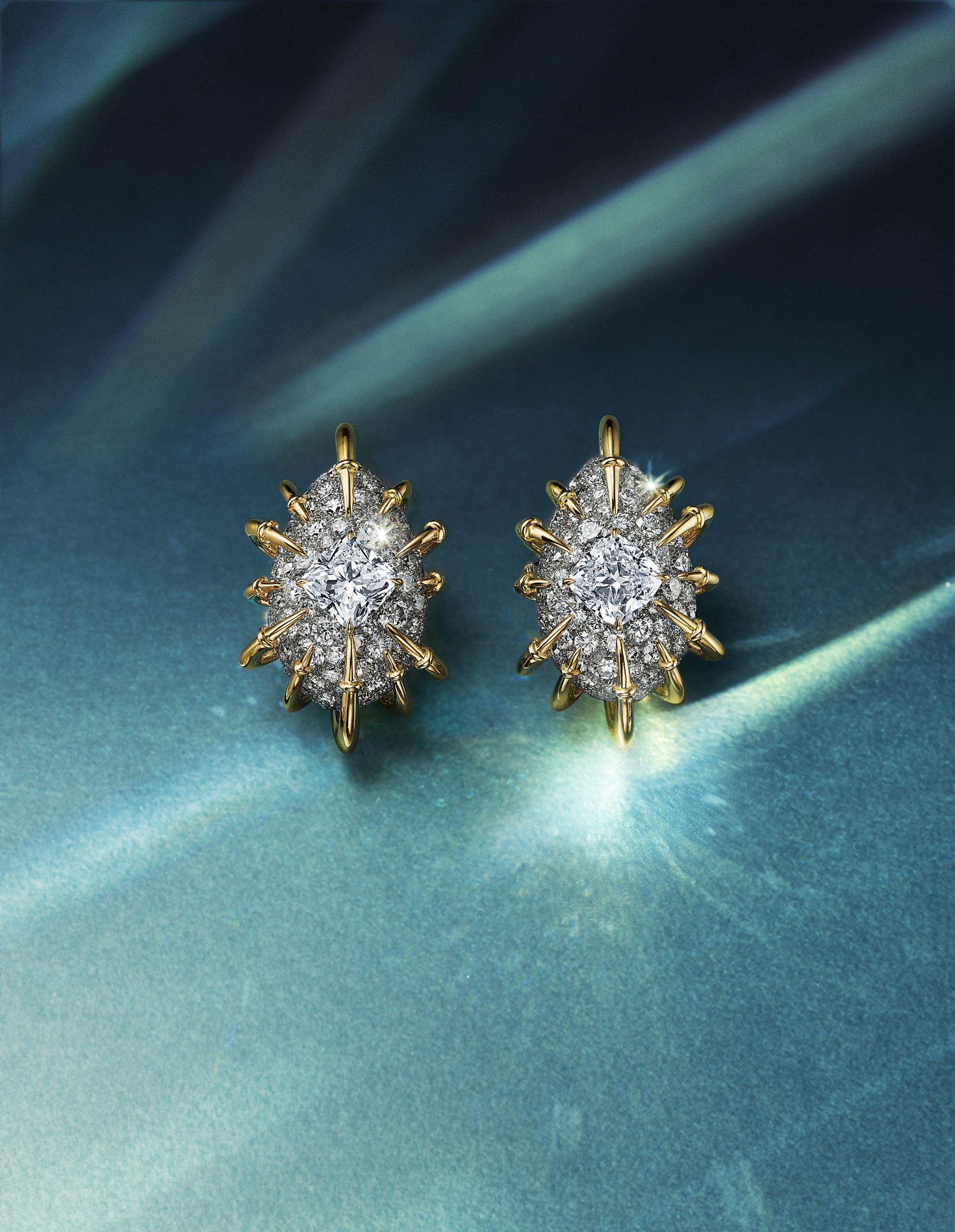
The piece de resistance of the collection is a necklace from the Wings chapter. An intricate creation composed of individual, articulated elements resembling feathers, the Wings necklace takes its inspiration from Schlumberger’s wing silhouettes and the mythical flying horse, Pegasus.
It is also Verdeille’s favourite piece of the collection. With a smile, she elaborates, “To me, it’s a really good synthesis of Schlumberger style and Tiffany savoir faire. One thing I love about the Wings necklace and the other pieces in the set is how we played with the diamonds. We played with different cuts – we have triangle, oval, radiant, brilliant and baguette cuts, and they all have different luminosities.”
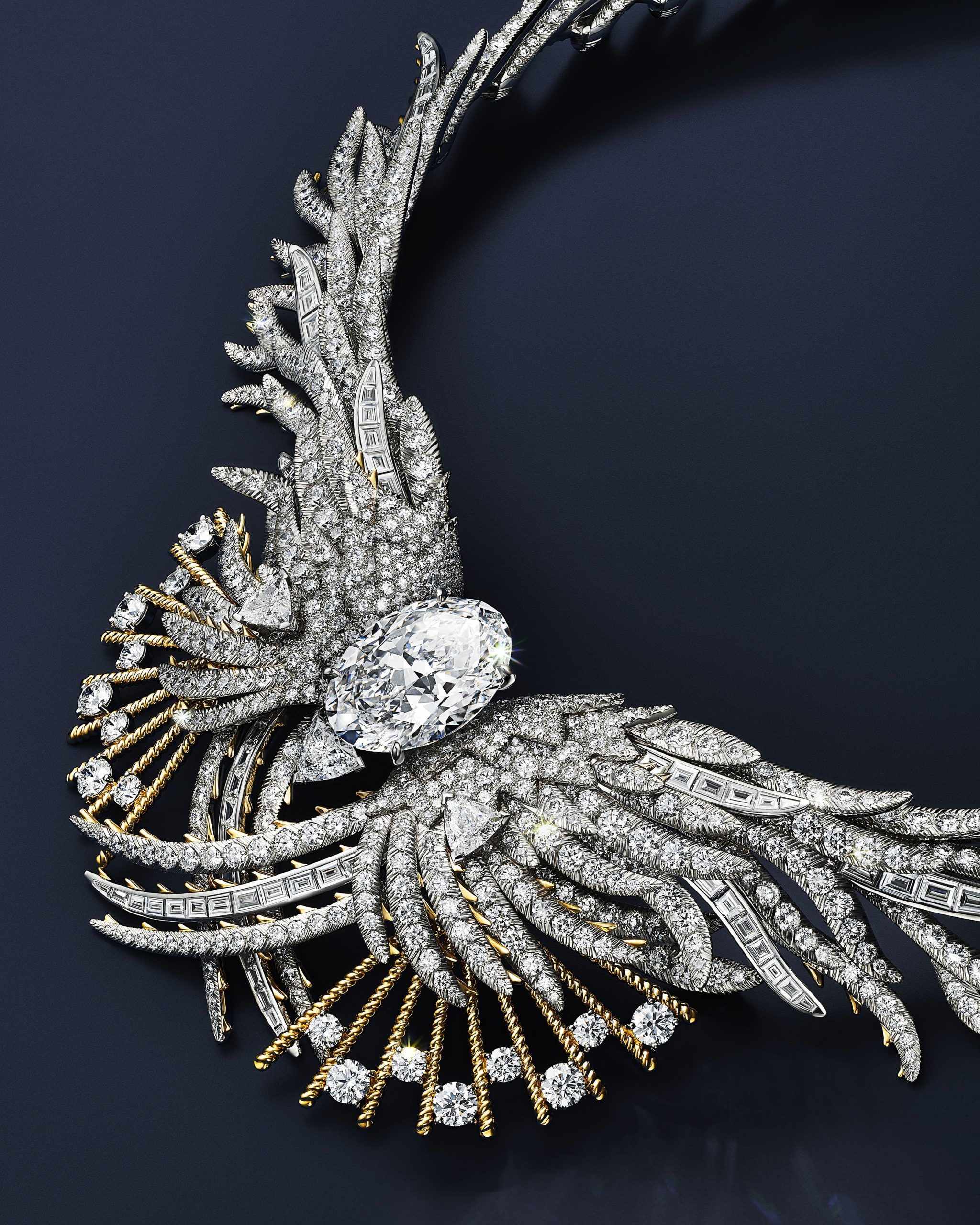
Aside from giving the piece kaleidoscopic sparkle, the variety of skilfully cut diamonds create a sense of eclectic yet refined dynamism. This quality is further enhanced by another novel treatment called serti plume (‘feather setting’ in French), where tiny notches along the edges of each platinum feather gives it a touch of lightness and realism. Verdeille explains, “Using an engraving tool to mimic the flowing barbs of a feather, the setter delicately and artistically drafted the engraved lines. These subtle details also serve as the setting for the round brilliant diamonds, giving the piece a naturalistic look.”
While large centre stones can sometimes overshadow high jewellery designs, the elaborate details and balanced design of the Wings necklace means that its impressive centre diamond beautifully complements the other elements without demanding attention. It’s quite a feat of design, considering that this particular specimen is a D-colour, internally flawless oval diamond of more than 20 carats.
Indeed, Tiffany has been making headlines for acquiring some pretty stunning stones of late, following on a tradition that began in 1877, when its founder Charles Lewis Tiffany acquired a 287.42-carat rough fancy yellow diamond that would be expertly cut down to become the famous 128.54-carat Tiffany Diamond. Recent notable acquisitions include 35 rare pink diamonds from the now-closed Argyle Diamond Mine in western Australia; and the Tiffany Muzo Emerald, an emerald weighing more than 10 carats, and characterised by exceptional clarity and colour.
For Verdeille, these natural beauties guide the design of the final pieces. She says, “In many cases, the gemstone suites that we acquire inform the design, rather than the design dictating the gemstones used.”
A Tiffany Céleste chapter that was thus inspired is Ray of Light, which comprises pieces that evoke radiating sunrays and were inspired by archival Jean Schlumberger by Tiffany brooches. Verdeille shares, “We were fortunate to procure red and pink spinels that are exceptionally matched. We knew they would be the ideal gemstones to illustrate the concept of sunrays, expressed through the lens of archival Schlumberger designs.”
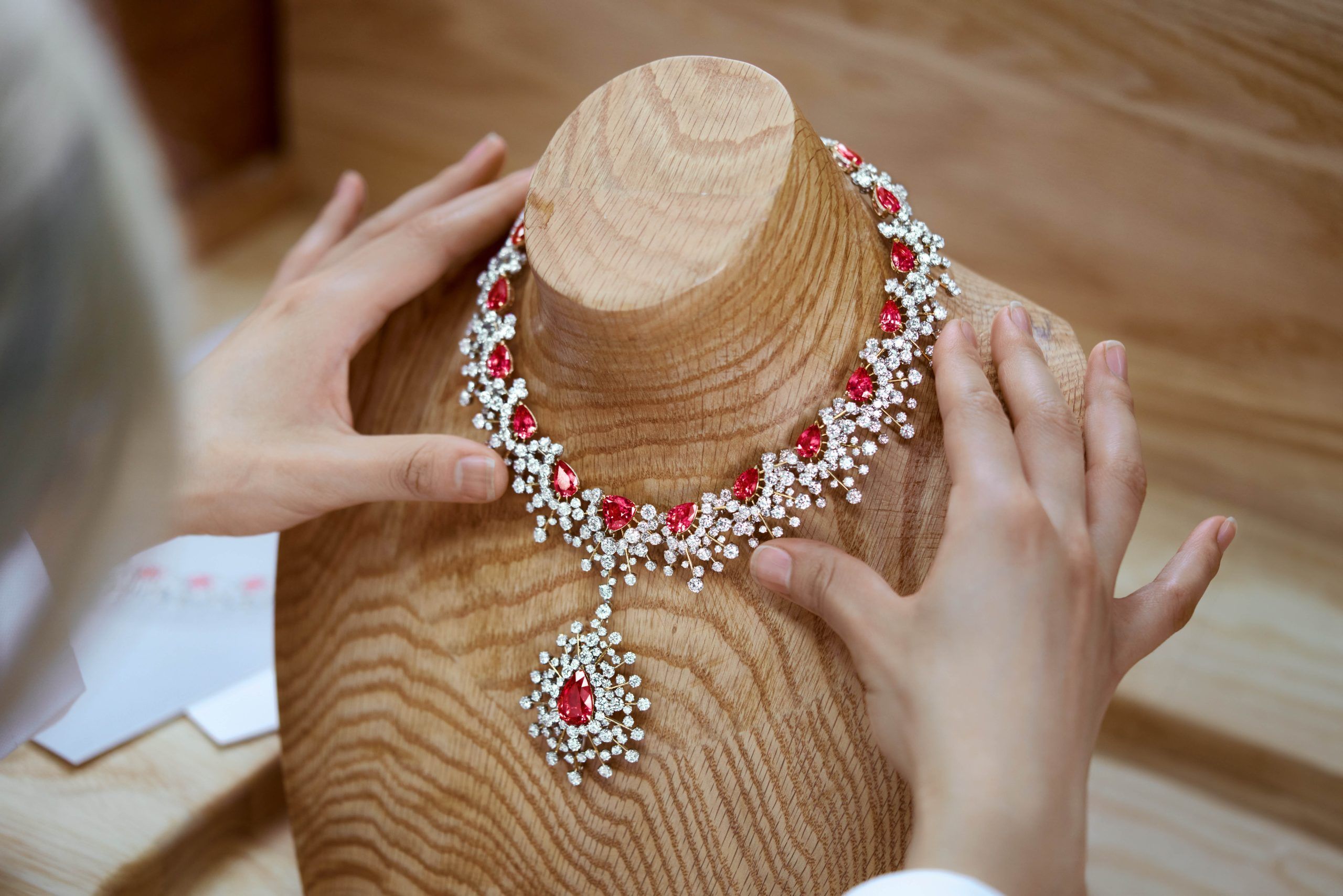
Including more than 10 creations, Ray of Light is an exceptionally large set featuring a suite of well-matched red and pink spinels – a rarity to come by. One Ray of Light standout is a necklace that converts into a tiara, a style that has been absent from Tiffany high jewellery collections for years. Says Verdeille, “I think this is very modern. I love the idea that it can be worn as a necklace but also easily transformed to be worn in a classical way.” Another necklace in the series, resplendent with more than 48 carats of red spinels, a pink spinel of over four carats and diamonds, bears a statement pendant that can be detached and used as a brooch.
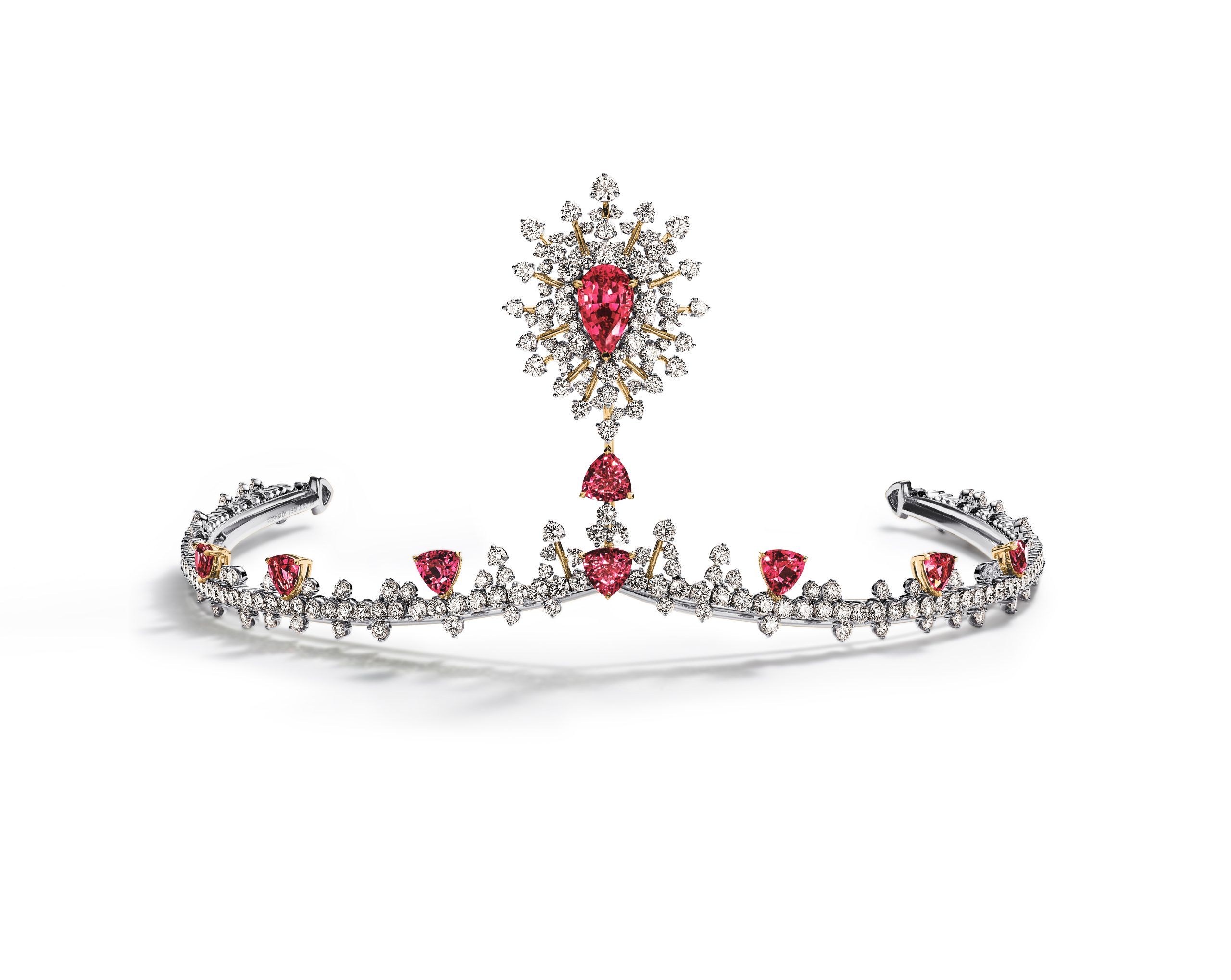
In the Iconic Star chapter, gemstones again led the design. Here, the pieces explore the star motif, taking their cues from an archival Schlumberger sketch. In one statement necklace, freeform aquamarines in organic shapes are arranged harmoniously so their curves nicely fit into each other, and also beautifully contrast with faceted blue zircons, as well as star-shaped elements with mother-of-pearl inlays.
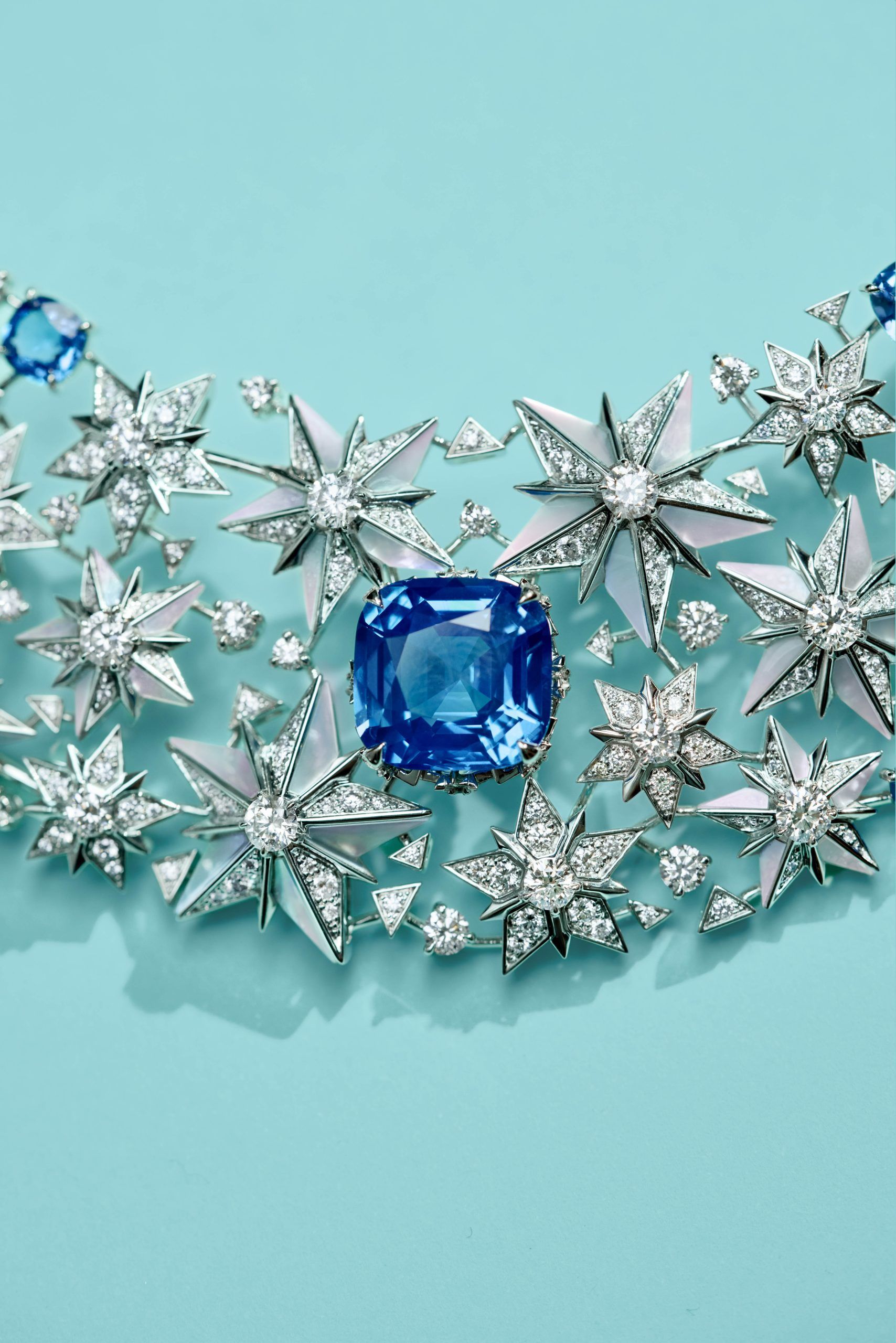
With all the minute details, varied settings and transformability that went into Tiffany Céleste, one might be surprised to find out that the greatest challenge in realising this high jewellery collection actually lies in the combined use of its precious metals – platinum and yellow gold.
Verdeille says, “We use platinum and yellow gold because it’s a signature of the brand and of Schlumberger. White gold was developed in France in order to make jewellery lighter but, historically, platinum was used. With white gold, you add rhodium to accentuate the white colour, but the colour of platinum is pure. But when you solder these two metals, their melting point is not the same – it’s higher for platinum. So it’s very complex to work these two kinds of metal together. You really need to know about high jewellery and how to manage the temperature. Only a few workshops in Paris and New York can do this.”
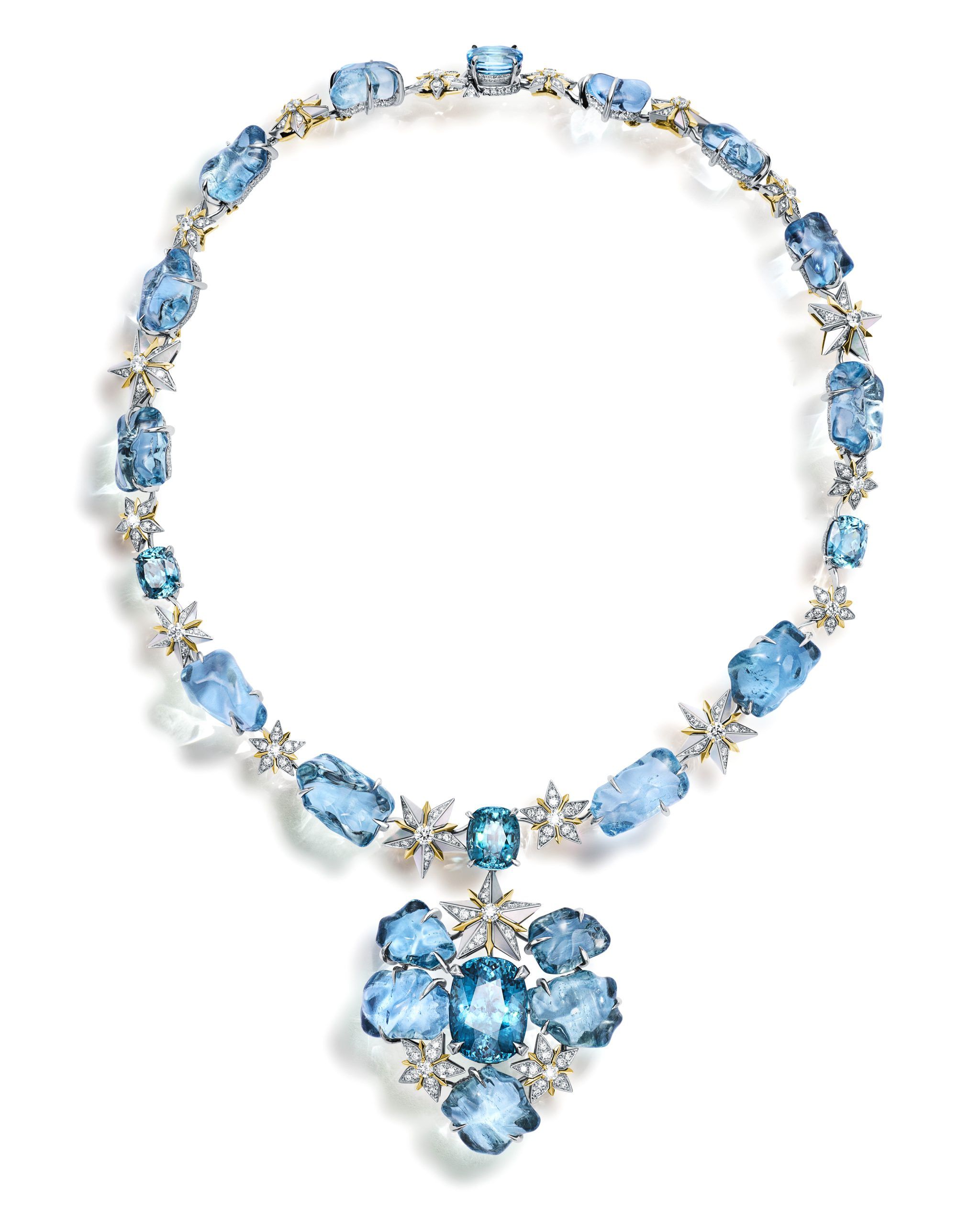
From creations to abstract concepts, and even in his preferred mix of metals, Schlumberger is clearly a powerful influence, more than four decades on. As the creative force behind iconic and collectible designs such as Bird on a Rock, it is no surprise that Schlumberger is an important lodestar for Verdeille. Tapping into the vast archives – including actual designs as well as innumerable rough sketches – of this prolific forerunner is one way in which she aims to “perpetuate the traditions and codes of the house, while expanding upon them”.
At the same time, though, Verdeille has put her own spin on this inherited design language, imbuing pieces with even greater delicacy, and details focused on “mobility and sensuality”. While Schlumberger’s Bird on a Rock pieces traditionally feature a crested bird perched on a faceted coloured gemstone, Verdeille’s reinterpreted this classic using rare natural saltwater pearls last year with her Bird on a Pearl collection. “For me, each pearl was like a cloud,” she says, painting quite the poetic picture.
For a French designer who had been steeped in Parisian jewellery culture for more than two decades, Tiffany was an eye-opener. “Before joining the company, I did not know how rich the DNA of Tiffany was. I was impressed.” Her team has been her greatest asset in smoothing her transatlantic passage. Says Verdeille, “When I started in the company, I needed to learn about everything – the house’s DNA, the city, the language. My team and I work together closely every day, and I enjoy how I am creating a new chapter in the Tiffany story with them.”
(Image: Tiffany & Co)
This article was first published in Prestige Singapore